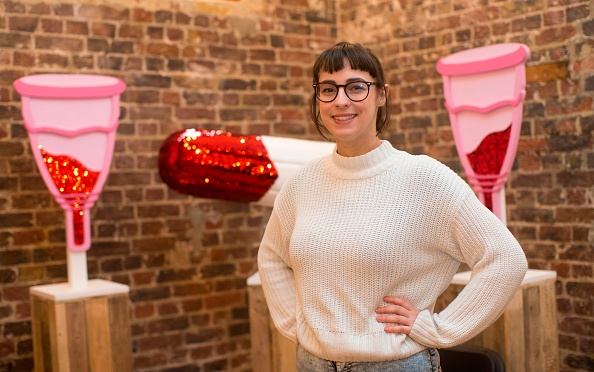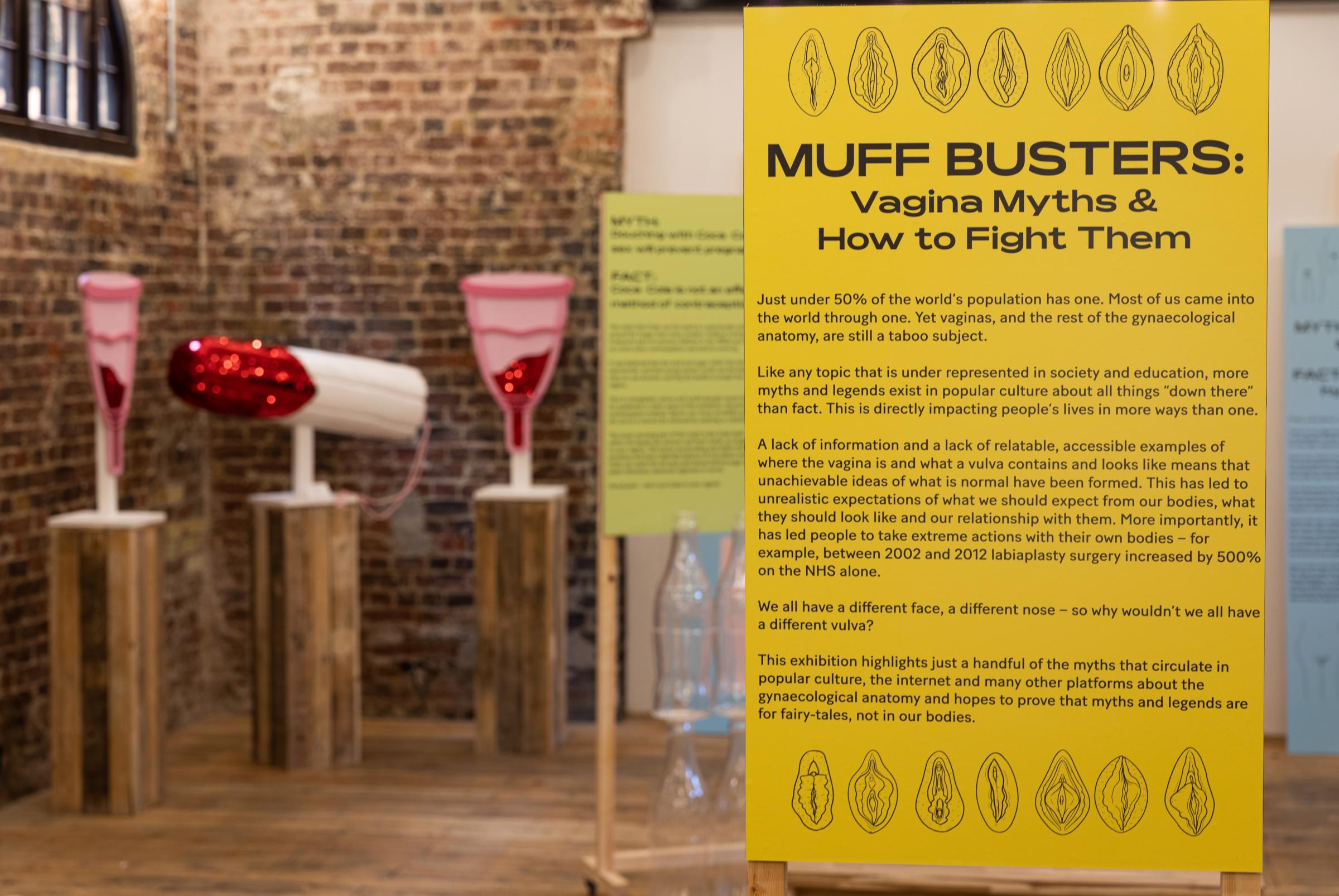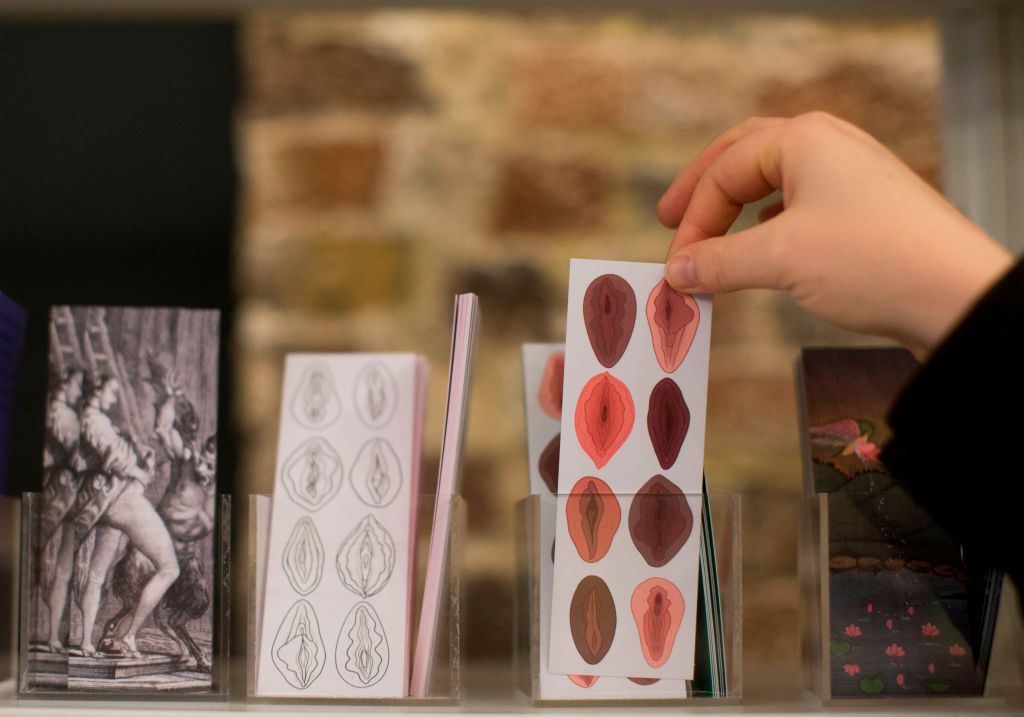
It’s a couple days before the opening of the world’s first bricks-and-mortar Vagina Museum in London, and curator Sarah Creed is wearing a bright blue acetate necklace reading ‘Vaginas Are Normal’. The museum’s first exhibition, Muff Busters: Vagina Myths and How to Find Them, opens Saturday, a whistlestop tour examining the facts behind periods, contraception, hygiene and sexuality, and dispelling myths about the gynecological anatomy, pubic hair and the location of the clitoris.
Nestled in the former horse stables that now comprises London’s touristy Camden market, the 700-square-foot Vagina Museum is the brainchild of biochemistry graduate Florence Schechter, who has a background in presenting science-based documentaries, podcasts and comedy shows to the public. Schechter’s inspiration for the museum was sparked in March 2017 when she discovered there was a permanent penis museum in Iceland, but no museum dedicated to the vagina anywhere in the world. “So I decided to make one,” she says, as we sit beside a giant red glittery tampon and menstrual cups in a corner of the compact space. “I was unsurprised when I found out [about Iceland’s Phallological Museum]; it was new information, but not surprising.”
More surprising to visitors might be the statistics and facts displayed in the museum. One of the exhibition panels, next to a 3D labeled illustration of the gynecological anatomy, highlights a March 2019 survey that revealed that half of Britons could not identify or describe the function of the urethra (58%), the labia (47%) or vagina (52%). For curator Creed, who has 10 years of experience in museums in the U.K., those numbers were far higher than she ever thought they would be, particularly from respondents of the survey who identified as female. “That’s what really spurred me on to think about how we can take it forward and do more activities and workshops.” Initially conceived of as a pop-up, the Vagina Museum ended up getting its first long-term home after a successful crowdfunding appeal. It has a rich events program planned, ranging from plays about enjoying sex while living with the medical condition of vaginismus, to a dinner in honor of Transgender Day of Remembrance, an internationally-observed day each year in memory of transgender people whose lives were lost in acts of anti-transgender violence. “We’ve also got a Christmas crafting workshop where you can make baubles, or make a clitoris star for your tree,” Schechter adds.

A sense of humor runs through the museum—from Schechter and Creed’s own underwear on display showing how normal vaginal discharge is, to the postcards in the gift shop with quirky illustrations of sex toys, contraceptives and vaginas of all kinds. But the museum’s underlying goal is to educate visitors about women’s health and destigmatize the female body. Creed says there has already been interest from several schools about visits. Given that the number of people attending cervical cancer screenings has hit a 20-year-low in the U.K., Schechter says it’s a particularly pressing time to be talking about gynecological health. “Stigma surrounding this part of the body is very rooted in society and has a lot of real world consequences, like people not going to the doctor when they have symptoms, putting off their cervical smears; people are literally dying of embarrassment,” says Schechter. “We want to tackle that stigma in a non-conventional, fun and accessible way.”
One example is the enlarged Coca Cola bottle on display, perhaps not what you’d expect in a museum dedicated to vaginas. Yet in the 1950s and 1960s before the widespread availability of contraception, particularly in the U.S., a common wives’ tale held that douching with Coca-Cola classic glass bottles after penetrative sexual intercourse could prevent pregnancy because the acidity of the soda could kill sperm. It’s one of the myths the museum is keen to debunk, as not only is the practice not an effective form of contraception, but it could also lead to infection in the vagina. The museum is also keen to dispel myths about the billion-dollar feminine hygiene industry, showcasing a box of products including lightening creams, tightening gels and virginity soap, purported to create an “ideal vagina.” “I could have filled a space 800 times bigger than this,” says curator Creed. “We’re going to do a lot of evaluation; I don’t know what everyone in the world who has a vagina wants to know about themselves, so it’s a first step.”

While the lease at the Vagina Museum’s current location is for two years, the eventual goal is to create a permanent museum space with a permanent collection, although Schechter says that will take several years and significant funding. She’s also looking to other parts of the world where the Vagina Museum might make an impact. “I would obviously love to do a pop-up in the U.S. for many reasons, especially considering that it’s a very developed country and yet its abortion laws are very backward. I’d love to do one in Northern Ireland too.” Schechter also says that the museum has had several enquiries from Indian journalists asking whether the country, which has experienced its own #MeToo reckoning, would be ready for a museum centered around a historically taboo subject. Indeed one of the museum’s exhibits is a medical pathology textbook from India used to teach forensic science students, with a table showing the apparent characteristics of a “true virgin” and a “false virgin.”
The museum also makes a point of challenging gender norms and cisnormative ideas, displaying the words “if you have a vagina, then you are a woman” as one of the myths in the current exhibition. “I feel like one of the central tenets of modern feminism should be bodily autonomy, so that should include you being able to control what gender you are,” says Schechter.
That awareness of and commitment to promoting social justice issues is a conversation several historic museums are grappling with, evident during a controversial international debate around the definition of museums in September. The Vagina Museum, along with several other museums in the U.K. including the East End Womens’ Museum, the Migration Museum Project, the Museum of Transology and the Museum of British Colonialism, mark a shift away from conventional definitions of museums, with a particular focus on inclusivity, education and awareness-raising.
“Museums are used to symbolize community values,” says Schechter. “What’s interesting about these museums is that we’re responding to a social change that is happening, where we are caring more about ethics, values and principles, and throwing off the shackles of previous hierarchies of classism, misogyny and homophobia. We’re trying to live these values and say we should have a society based on them.”
More Must-Reads from TIME
- Cybersecurity Experts Are Sounding the Alarm on DOGE
- Meet the 2025 Women of the Year
- The Harsh Truth About Disability Inclusion
- Why Do More Young Adults Have Cancer?
- Colman Domingo Leads With Radical Love
- How to Get Better at Doing Things Alone
- Michelle Zauner Stares Down the Darkness
Contact us at letters@time.com